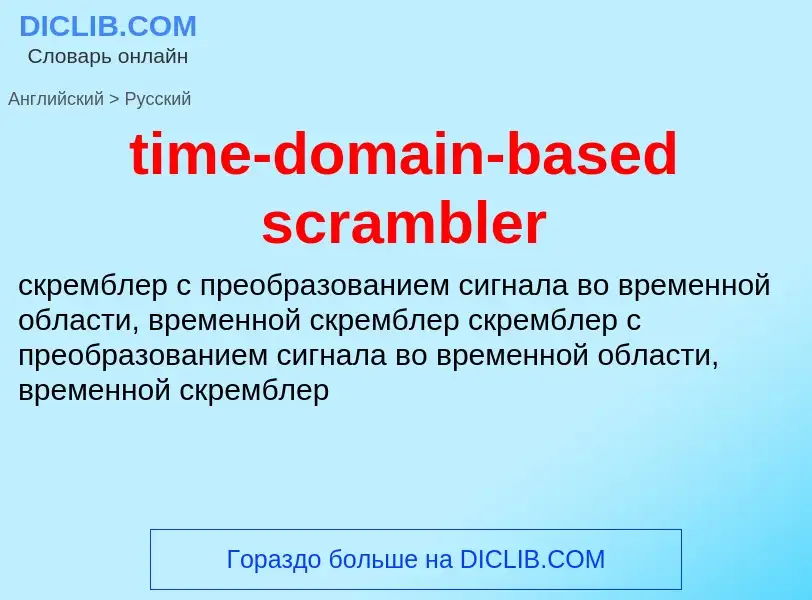Vertaling en analyse van woorden door kunstmatige intelligentie ChatGPT
Op deze pagina kunt u een gedetailleerde analyse krijgen van een woord of zin, geproduceerd met behulp van de beste kunstmatige intelligentietechnologie tot nu toe:
- hoe het woord wordt gebruikt
- gebruiksfrequentie
- het wordt vaker gebruikt in mondelinge of schriftelijke toespraken
- opties voor woordvertaling
- Gebruiksvoorbeelden (meerdere zinnen met vertaling)
- etymologie
time-domain-based scrambler - vertaling naar russisch
['taimmʌni]
синоним
Definitie
1) Принудительное безвозмездное - конфискация - или оплачиваемое - реквизиция - изъятие чего-л., производимое государственными органами.
2) Лишение одним классом или одним из слоев класса собственности и прежнего социального положения другого класса или другого слоя того же класса.
3) Любое принудительное отчуждение чего-л.
Wikipedia
Domain-based Message Authentication, Reporting and Conformance (DMARC) is an email authentication protocol. It is designed to give email domain owners the ability to protect their domain from unauthorized use, commonly known as email spoofing. The purpose and primary outcome of implementing DMARC is to protect a domain from being used in business email compromise attacks, phishing email, email scams and other cyber threat activities.
Once the DMARC DNS entry is published, any receiving email server can authenticate the incoming email based on the instructions published by the domain owner within the DNS entry. If the email passes the authentication, it will be delivered and can be trusted. If the email fails the check, depending on the instructions held within the DMARC record the email could be delivered, quarantined or rejected.
DMARC extends two existing email authentication mechanisms, Sender Policy Framework (SPF) and DomainKeys Identified Mail (DKIM). It allows the administrative owner of a domain to publish a policy in their DNS records to specify how to check the From: field presented to end users; how the receiver should deal with failures – and provides a reporting mechanism for actions performed under those policies.
DMARC is defined in the Internet Engineering Task Force's published document RFC 7489, dated March 2015, as "Informational".

.jpg?width=200)
![DVB]] DVB]]](https://commons.wikimedia.org/wiki/Special:FilePath/Scrambler randomizer additive.png?width=200)


